Trail running in Patagonia
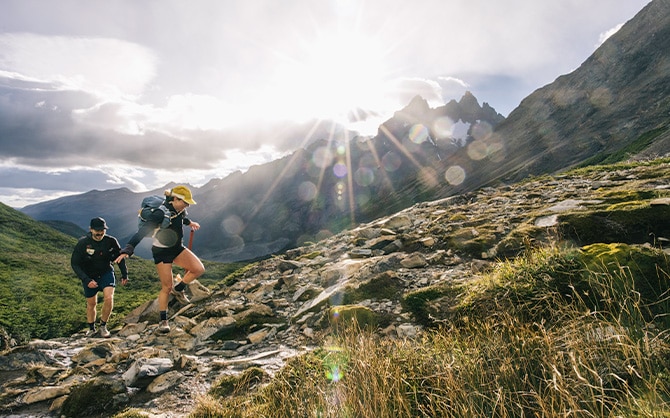
Professional adventurer and avid trail runner Andy Cochrane shares his words and photos from a recent 7-day, 120-kilometer running trip over prime South American trails.
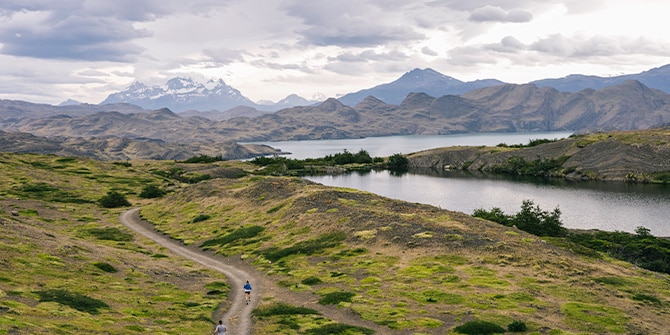
Torres del Paine National Park in Chile's Patagonia region
Those that know me well — or even those who just follow me on Instagram — know that I don’t like to sit still. I’m not sure where I picked up this trait, but I do know it started from a very young age. I’m fortunate to have a lot of experience doing this kind of thing.
Many of my favorite days are long slogs in the mountains, or big trips to explore new countries on foot. I’m lucky to have a lifestyle that allows for this and a career that actually enables it.
I’ve had my eye on Patagonia, a region at the southern end of South America, for years, possibly decades. It was one of the few outdoor destinations I’d never seen in person. But I didn’t want to trek around Torres del Paine with a heavy, cumbersome backpack. Nope, I wanted to experience it by running its rugged, root-filled trails because I find running more fun and you get to see a lot more in less time. The O-trek might be famous, but this route rarely gets run. That’s all the inspiration I needed to dive in. We planned a 5-day, 136 kilometer jaunt that circumnavigated the park. For long distance trail runners, this meant full days, but not heinously hard.
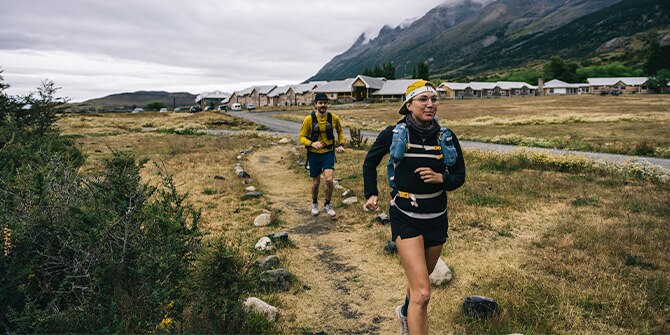
Running the O-Trek, Torres del Paine, Patagonia
I remember the first few steps pretty clearly. I was quite literally bouncing with excitement. Before the trip I tried to temper my expectations, but when I saw the spires of Torres, I lit up. Returning five days later was almost anticlimactic, to be honest. We had beautiful weather and a flowy trail the entire last day, which meant we finished around lunch. We had been waiting for a last challenge — something hard to fight through — but it never came. For most of that afternoon I sat and wrote in my journal. I had been planning this run for a few years (thanks, COVID) and suddenly it was over. It didn’t hit me until dinner.
The logistics of our run were terribly complex. The biggest key — and suggestion I would give others — is to spend the money to stay in huts each night. Booking a hut helps keep your pack weight down and also gives you a chance to get to know some locals and eat really good (albeit simple) meals with new friends. These were some of the most enjoyable parts of the journey for us. We would often get up early and take our time drinking coffee and eating breakfast before packing our bags and heading out for the day.
This is a carousel. Use next and Previous buttons to navigate.
Like most adventures in the backcountry, challenges came and went. We had half days filled with rain, some chafing and sore backs, trouble sleeping and one bad fall, steep climbs and stiff wind, and one night scrambling for food because of a miscommunication while making our reservation (don’t worry, we found instant noodles). Overall though, the trip was smooth, all things considered. Patagonia is a notoriously challenging environment — some say you get four seasons every day, so we felt pretty lucky with the hand we were dealt.
Without some challenges, whether they come during long distance runs or in day-to-day life, I don’t feel like I’m learning as much. When you approach challenges with curiosity and a willingness to experiment, you often see you’re capable of much more than you think. Our run was a perfect example of this attitude. We did our best to plan details and pack the right gear, but ultimately you always get some of it wrong. Those “oh shit” moments kind of define who you are as a human. That’s when I feel truly alive.
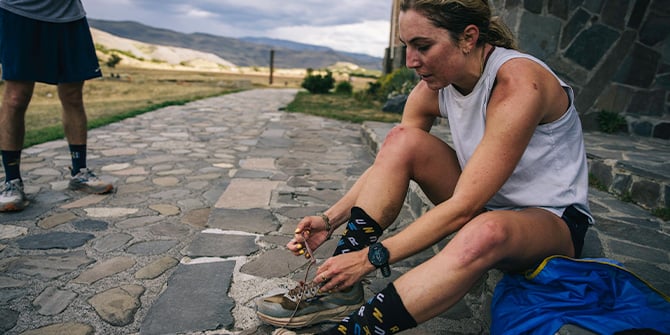
Trail tricks and gear tips
I’m fortunate to have a lot of experience doing this kind of thing. I grew up with two park ranger parents. I learned to paddle a kayak at the same time I learned to walk, and I started going on week-long trips in elementary school. By the time I graduated college, I had spent over two years of my life sleeping in a tent, often somewhere remote. This is almost second nature to me at this point in my life.
I’ve learned a lot of small tricks on how to stay warm, happy, comfortable, and steady when things go south. One of the first rules of any type of backcountry travel is to take care of your feet. Unlike pretty much every other part of your body, if you mess up a foot or ankle, you’re likely getting evaced. For something like this, that means really testing your shoes rigorously beforehand. Be sure to wear wool socks because they handle water and cold well, give your feet periodic ice baths in mountain rivers, and apply KT tape or wraps when needed to protect against rolls and tendonitis. To date, I’ve never lost a toenail and I hope I can still say that on the day I die. For this project I wore the Brooks Cascadia 15, a burly shoe with a ton of cushion and enough traction, which made it the perfect footwear for Patagonia.
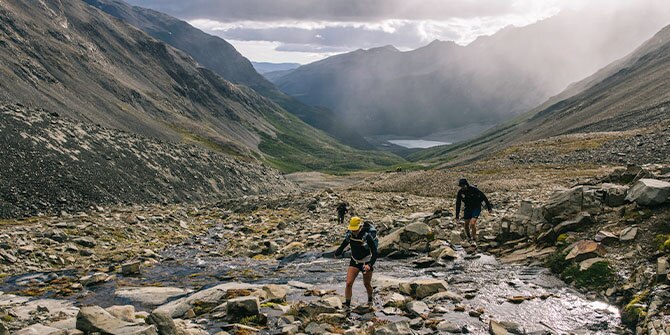
Torres del Paine National Park in Chile's Patagonia region
The right gear is essential for any outdoor adventure. For my Patagonia trip, I used a 40-liter fastpacking pack, but probably could have gotten away with something a little smaller, too. Inside I had spare layers, snacks, a first aid kit, a sleeping bag, and a few electronics. The key for us was to bring clothes that were easy to layer with each other– weather changes quickly, so we wanted to easily swap between a GORE-TEX raincoat, windbreaker, puffy, or midlayer, depending on conditions and how fast we were moving. I spent most of my days in a Canopy jacket and Switch Hybrid pants, because they are both breathable, but can also block a little wind and light rain. And of course, it’s important to only bring gear that wicks, dries fast, and stays warm when wet — leave the cotton layers at home.
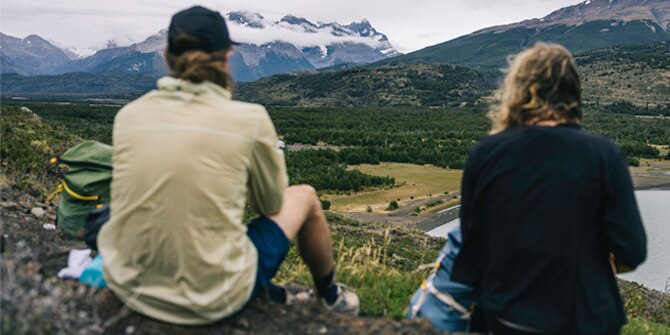
What's next?
After a week at home, editing photos, and writing about the experience, I’m already excited to go back. There aren’t many places that call me like Patagonia did, and even fewer that I want to visit more than once (novelty is very high on my list of priorities), but this place and this park is definitely one of them. For now I’m in a slow base-building plan for running while I wrap up the ski season. I’ll be spending a month in Europe this spring, before finally putting the skis in storage and ramping up mileage for summer alpine season.
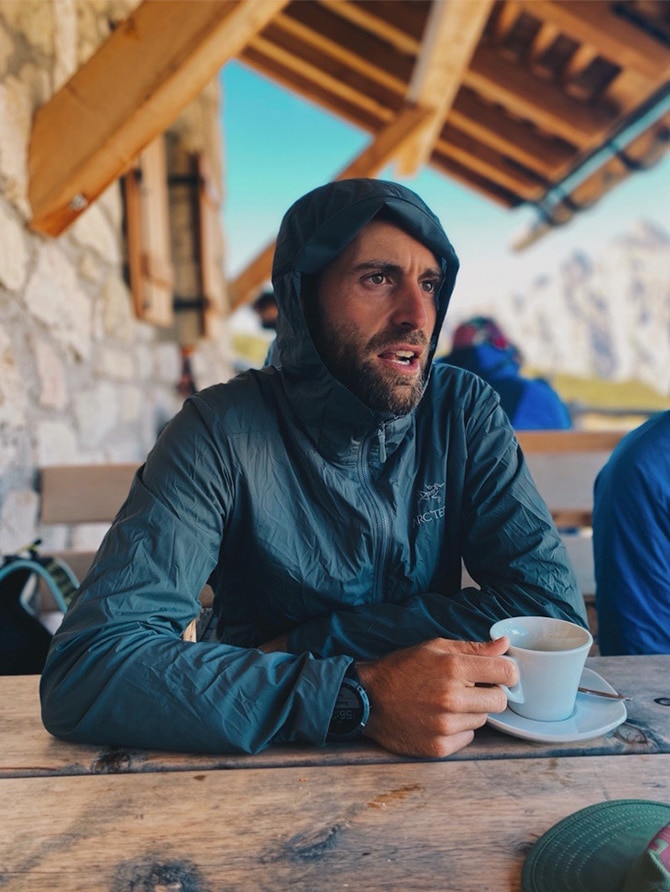
Bio
Andy is a freelance writer, photographer, and producer who lives in Jackson, Wyoming with his dog, Bea. He’s an avid trail runner but rarely races, instead spending his time and effort trying to invent novel adventures on two feet, more often than not getting lost in the big mountains and spending the rest of his day trying to find his way out.
Curious to learn more? Follow his journey @andrewfitts or visit his website to learn more.

